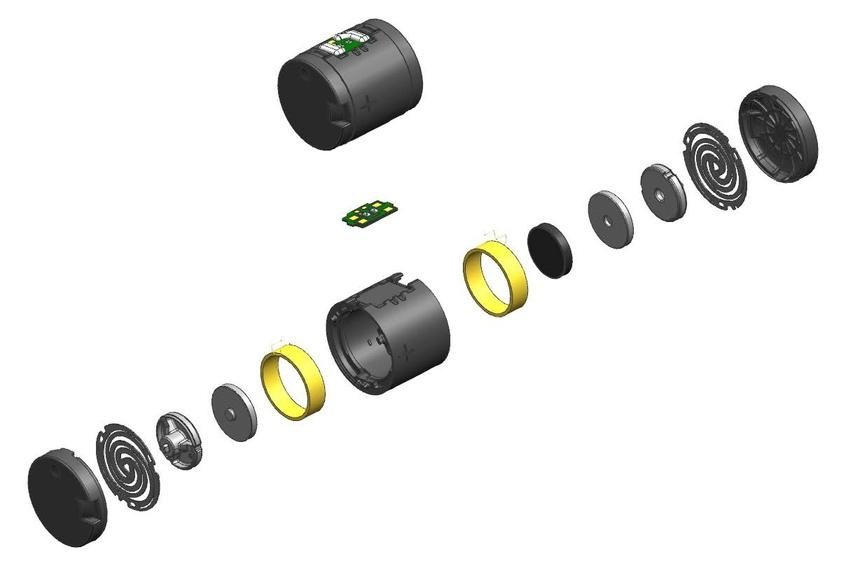Mastering Haptic Feedback: A Comprehensive Guide to Actuators
In an era where digital interaction is ubiquitous, the human senses still play a pivotal role in our experience of the world. Traditional products have relied heavily on sight and hearing to convey information. However, the realm of tactile feedback, or haptics, is gaining prominence, revolutionizing user interfaces across industries such as consumer electronics, Augmented/Virtual Reality (AR/VR), Internet of Things (IoT), automotive, and medical sectors. Haptic technology empowers engineers and designers, providing them with unprecedented control to craft intuitive user interfaces. This guide delves into the world of haptic feedback, spotlighting electromechanical actuators—a prevalent method for stimulating the mechanoreceptors in our body sensitive to vibrations.
Understanding Electromechanical Actuators
Electromechanical actuators, the crux of haptic feedback, come in four primary forms: Eccentric Rotating Mass (ERM), Linear Resonant Actuators (LRA), Voice Coils Actuators (VCA/VCM) and Piezoelectric Actuators (PA). Each category brings unique characteristics and is suited for specific applications. From the low-frequency rumble of ERM actuators to the precision and quick response of LRAs, and the realistic haptic sensation of VCAs to the energy efficient wide frequency range of PA, understanding these technologies is crucial for integrating effective haptic feedback into your products.
Eccentric Rotating Mass (ERM)
ERM actuators operate on a simple yet effective principle: an off-axis rotating mass attached to a DC motor. The frequency of the vibrations correlates with the mass’s rotation speed, offering a tactile experience that’s directly influenced by the driving voltage. ERMs are particularly noted for their ‘rumble’ effect, making them ideal when precise vibration patterns aren’t critical but a noticeable tactile feedback is desired.

Linear Resonant Actuators (LRA)
In the realm of haptics, LRAs stand out for their efficiency and compact form factor. Employing principles similar to speaker technology, LRAs create vibrations through moving a mass attached to a coil, omitting the diaphragm found in speakers. This structure allows for a direct, linear response, eliminating ramp-up times and making them incredibly power-efficient. Their rapid response and ability to create nuanced vibration patterns make LRAs a popular choice in compact and power-sensitive applications like wearables and smartphones.

In an LRA, the mechanism consists of a mass attached directly to a coil, as opposed to diaphragms commonly used in speakers. Instead of producing sound, the LRA generates vibrations by moving the mass linearly when the coil is powered. This movement depends on the frequency and voltage of the input signal, allowing precise control over the vibration’s intensity and pattern.

Voice Coils (VCA/VCM)
Voice Coil Actuators (VCAs), also referred to as Voice Coil Motors (VCMs), take haptic feedback to the next level. By increasing the actuator’s size and mass, VCAs produce a more substantial and realistic vibration effect. A notable aspect of VCAs is their ability to replicate auditory effects alongside tactile feedback, enriching the multisensory experience. However, this increased capability comes at the cost of higher power consumption, a factor that designers must consider.

Linear Resonant Actuators (LRA)
In the realm of haptics, LRAs stand out for their efficiency and compact form factor. Employing principles similar to speaker technology, LRAs create vibrations through moving a mass attached to a coil, omitting the diaphragm found in speakers. This structure allows for a direct, linear response, eliminating ramp-up times and making them incredibly power-efficient. Their rapid response and ability to create nuanced vibration patterns make LRAs a popular choice in compact and power-sensitive applications like wearables and smartphones.
In an LRA, the mechanism consists of a mass attached directly to a coil, as opposed to diaphragms commonly used in speakers. Instead of producing sound, the LRA generates vibrations by moving the mass linearly when the coil is powered. This movement depends on the frequency and voltage of the input signal, allowing precise control over the vibration’s intensity and pattern.
Voice Coils (VCA/VCM)
Voice Coil Actuators (VCAs), also referred to as Voice Coil Motors (VCMs), take haptic feedback to the next level. By increasing the actuator’s size and mass, VCAs produce a more substantial and realistic vibration effect. A notable aspect of VCAs is their ability to replicate auditory effects alongside tactile feedback, enriching the multisensory experience. However, this increased capability comes at the cost of higher power consumption, a factor that designers must consider.
LRA and VCA actuators operate best at specific frequencies, delivering the strongest vibrations within a narrow range. Designers must keep these devices close to their optimal frequency through control mechanisms. In contrast, ERMs offer a broader range of operation, as their vibration intensity varies with voltage, not frequency, giving designers more flexibility in frequency choice. Each actuator type has its own advantages and trade-offs that designers should consider for their product needs.
Piezoelectric Actuators (PA)
In contrast to alternative actuators, piezoelectric actuators leverage the piezoelectric effect as their core principle for generating haptic feedback with remarkably low power consumption. These devices are perfect when precise control and movement are required in a compact, thin profile- with a unique sense of touch for high-quality tactile effects. They exhibit efficient operation across an extensive frequency range, featuring rapid response times due to the absence of mass to be moved.
Choosing the Right Actuator
Selecting the ideal actuator is a critical step in haptic design. Factors such as desired vibration strength, precision, power consumption, and form factor play a significant role in this decision. While ERMs offer a broad range of operation due to their voltage-based vibration variation, LRAs and VCAs provide more nuanced control over vibration strength and frequency, albeit within a narrower operational band. Piezoelectric actuators (PAs) offer efficient operation across a broad range
Integrating haptic feedback into product design opens a new dimension of user interaction. Whether used in conjunction with other sensory inputs or as a standalone communication method, haptic actuators enrich the user experience significantly. As we continue to push the boundaries of what’s possible in user interface design, understanding and harnessing the power of haptic technology will be paramount.
